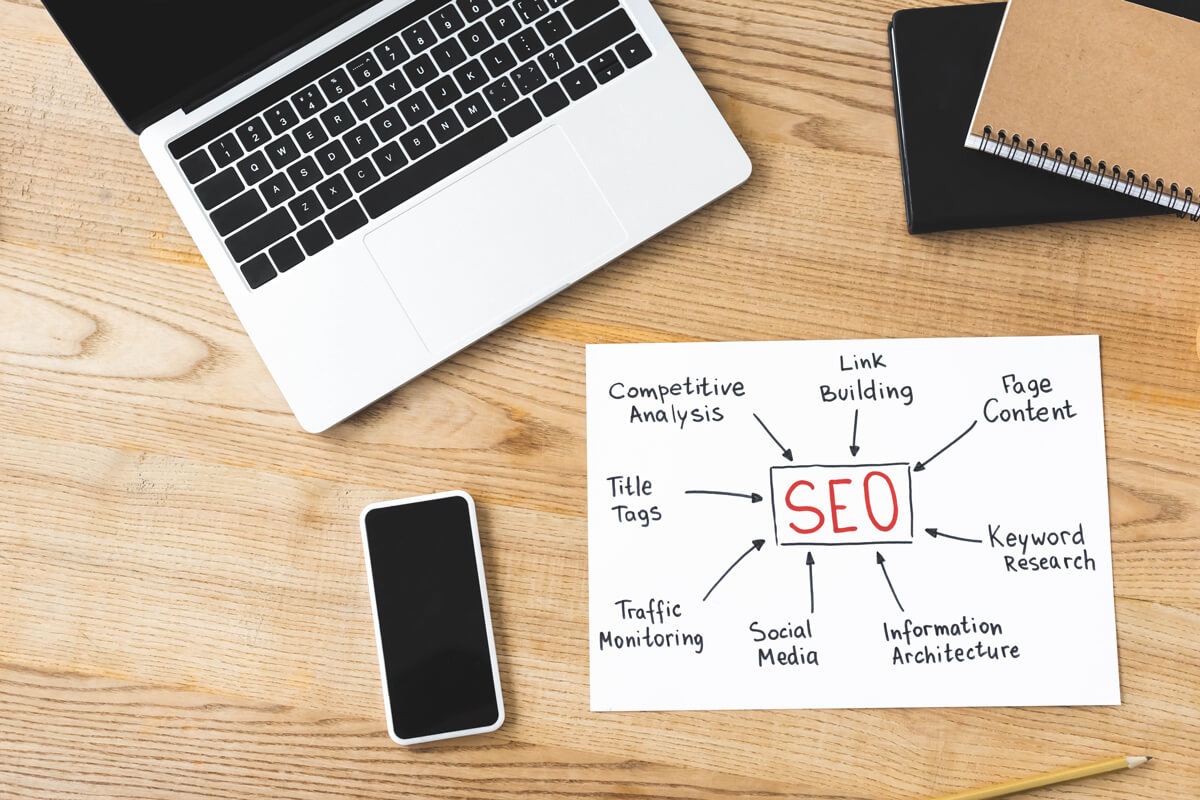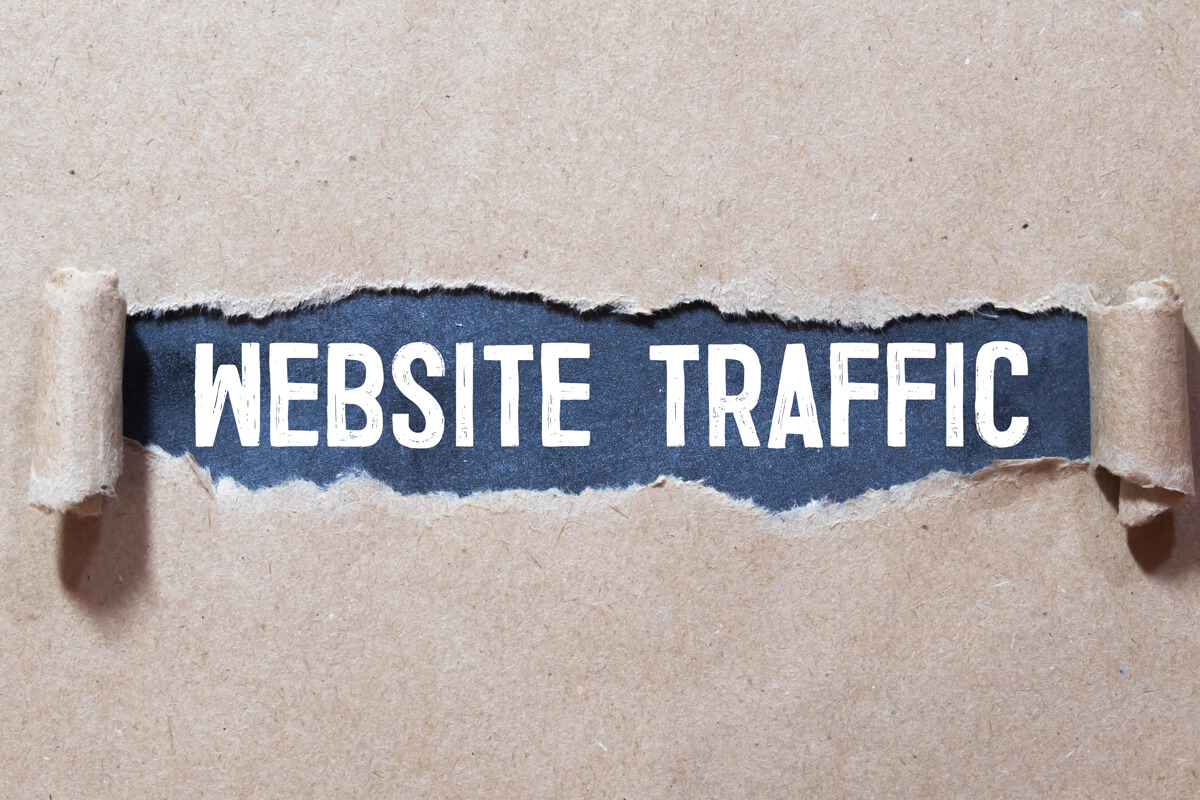Let’s be honest; there’s a ton of information about SEO out there. But a lot of it is confusing and hard to understand. So we decided to pull together some of the most common questions about SEO and answer them in simple terms that you can understand.
Let’s dive in!
1- How does SEO work?
Search Engine Optimization works by optimizing your site for specific keywords. These keywords are chosen carefully to reflect the products or services you provide. Once optimized, your site appears at the top of search results for those keywords.
2 – What is the difference between organic and paid search results?
There are two types of search engine results: organic and paid. Organic search results are the ones that appear in search engines for free. Paid results appear at the top or sides of a page.
Organic results are the results that show up in search engines for no cost. Paid results are the ones that show up at the top or sides.
While organic SEO is free, paid search ads require payment upfront. Once you pay, however, you can expect to receive traffic from Google and other search engines. You’ll also be able to target specific audiences by location, gender, age, interests, etc.
So which approach should you pursue? Well, it depends on your budget and goals. Organic SEO is probably the way to go if you don’t have any money to invest in paid search ads. But if you have the funds available, then paid search ads might be worth exploring.
3 – What is a meta description, and is it worth using?
Today, meta descriptions are less about optimizing for keywords and more about making sure your page is interesting enough for users to click through to your site. You should include a short paragraph that describes your page and its main points.
You may think adding many keywords to your meta description is a great idea, but Google doesn’t really reward those kinds of tactics anymore. Instead, focus on writing a compelling sentence or two that tells searchers what your page is all about.
This is especially true if you’ve already optimized your page for SEO. Adding keywords to your meta description won’t help you rank any better. Instead, focus on creating a compelling sentence or two to describe your page and encourage readers to click through to your website.
4 – Should I put keywords in my domain for SEO optimization?
You shouldn’t optimize your domain name to include keywords just for the sake of doing so. Doing so can actually hurt your search engine rankings. Instead, focus on creating high-quality content that ranks well organically.
For example, if your company name happens to include a keyword, that’s great! However, don’t worry about optimizing your domain name to include that keyword. You’ll still rank well without doing so. Focus instead on creating high-quality content and getting links from authoritative sites.
5 – How many keywords should I use per page?
To rank highly in search engine results, choosing the right keywords is essential. These are the terms that people use when they search for products or services online. Therefore, the more relevant your keywords are to your product, the more likely it is that people will find your site.
However, you don’t want to stuff your keywords into every corner of your site. This will not only make your site difficult to read, but it will also give search engines the impression that you’re trying to game the system. Instead, focus on placing keywords where they naturally fit into your content. This will make your site more readable and more likely to rank highly in search results.
6 – What is the difference between inbound and internal linking?
Internal links are links on a page on your site that go to another page on your site. Inbound links are other websites that link to your content. Both are valuable for SEO.
Internal links help search engines understand the structure of your website and find new pages. They also help to distribute PageRank throughout your website. Inbound links are essential because they show that other websites think your content is valuable and worth linking to. They also help increase your PageRank, leading to better search engine rankings.
While both types of links are essential, inbound links are typically more valuable because they come from an external source. Internal links can be helpful but less powerful than inbound links. So focus on building high-quality inbound links to improve your SEO.
7 – How many internal links should you add per page?
When it comes to internal links, quality is more important than quantity. A few well-placed links can enhance the reader experience by helping them find related content they may be interested in. But too many links can be overwhelming and cause readers to lose interest. The key is to strike a balance. Include enough links to be helpful, but not so many that they become a distraction. As long as you keep the reader in mind, you should be able to find the sweet spot.
8 – Do you need to be a coder to do SEO?
Many people believe that they need to be able to code to do SEO, but this isn’t necessarily true. Some aspects of SEO require a basic understanding of code, but you don’t need to be a coding expert to be successful. In fact, there are many aspects of SEO that have nothing to do with code at all. The most important thing is to have a solid understanding of the basics and to be willing to experiment. With a little time and effort, anyone can learn SEO basics and start seeing results.
9 – What is robots.txt?
Robots.txt is a page that provides search engines with information about which pages a company wants indexed or crawled. This page can be accessed by going to domain.com/robots.txt. The information on this page can help to ensure that only the desired pages are indexed and that unwanted pages are not crawled. This can be especially important for companies whose website contains sensitive or confidential information. In addition, robots.txt can help improve crawlers’ efficiency by providing them with specific instructions. As a result, robots.txt can be a valuable tool for companies that want to control how their website is indexed and crawled.

10 – What is the sitemap.xml file?
The sitemap.xml file is an index of all the pages on your site. It’s a quick reference for search engines of content that you want to be indexed. The file is generally generated automatically by your website’s content management system (CMS) but can also be created manually. Creating a sitemap.xml file can be helpful if you have a large website with many pages or if your pages are not well linked together. A sitemap.xml file can also be useful if you have newly-published content that you want to make sure gets indexed quickly. Generally, you will submit your sitemap.xml file to search engines through their webmaster tools portals. Once they have indexed the contents of your sitemap, they will use it to help crawl and index your website more effectively.
11 – What is the difference between crawling and indexing?
Indexing and crawling are two critical concepts in SEO. Simply put, indexing is when a search engine stores information about your website in its database. This process happens after the search engine has crawled your site.
Crawling is when a search engine looks through the content on your website. It “reads” each page and follows links to other pages on your site and other websites. Not all content is indexed – only the content that the search engine deems essential. The criteria for what is deemed important varies from one search engine to another. However, there are some general things that all search engines look for, such as keyword density, title tags, and meta descriptions.
12 – How can I see what pages are indexed?
Checking which pages on your site are indexed is a crucial part of SEO. To do this, simply type “site:www.yourdomain.com” into a search engine. This will bring up a list of all the pages on your site that are currently indexed.
13 – Why is image alt text so important?
Images are an essential part of any website or blog, but it’s important to remember that search engines cannot read images. This is where alt text comes in. Alt text is a short description of an image visible to search engines. It helps them to understand what the image is about and how it relates to the rest of the page.
14 – How long should you wait to see results from SEO?
How long does it take to see results from SEO? The answer to this question depends on many factors, including the amount and quality of content you create, how well the content resonates with your audience, and the size and strength of your site. Generally speaking, larger sites with strong domain authority will see results more quickly than smaller sites.
However, it is essential to give your SEO strategy some time to work before making any changes – at least a week, but preferably closer to a month. This will give the search engines time to crawl your site and index your content. Remember, patience is key when it comes to SEO!
15 – Is it a good idea to hire someone to do SEO?
Hiring someone to do your SEO can be a great way to improve your website’s ranking in search engine results pages (SERPs), but it can also be risky if that person does not have the knowledge and expertise to optimize your site properly. In this support document, Google outlines some of the risks associated with hiring the wrong SEO person. The most common dangers include paying for keyword-stuffed content, being promised unrealistic results, and being sold outdated or spammy link-building strategies.
While there are certainly benefits to hiring someone for SEO assistance, it is important to choose a reputable professional who is up-to-date on the latest trends and best practices. Taking the time to vet potential candidates thoroughly can help you avoid these common pitfalls and find an SEO partner who will help you achieve lasting success.
16 – How important is it to set goals when doing SEO?
It’s essential to set realistic goals when it comes to your SEO strategy. While it’s great to see an increase in traffic to your website, that traffic won’t mean anything if it isn’t quality traffic. Quality traffic is made up of people who are interested in what you have to offer and are more likely to become customers or clients. Instead of just focusing on the number of visits to your website, focus on the quality of those visits.
Ask yourself if the people finding your website through SEO are qualified prospects for your business. If not, then increasing the traffic to your website isn’t doing you any good. When setting goals, consider the difference between general and quality traffic. By focusing on quality over quantity, you’re more likely to see real results from your SEO efforts.
17 – What has changed in recent years in the world of SEO?
That’s a loaded question. What hasn’t changed? The world of SEO is constantly evolving, and new trends and best practices are always emerging. Some of the most significant changes in recent years have been the introduction of mobile search, the rise of voice search, and the increasing importance of local SEO.
Given how quickly things change in the world of SEO, it’s crucial to stay up-to-date with new trends and strategies. Change is one of the most constant things in the world of SEO, so it’s essential to stay on top of changes and make adjustments as needed. Whether you read industry blogs, attend webinars, or take professional training courses, there are many ways to stay up-to-date with the latest SEO trends.
Conclusion
Whew! That was a lot of information! At this point, you should understand the basics of SEO and how it can help your website succeed. Keep in mind that SEO is an ongoing process, and it’s crucial to stay up-to-date with the latest changes, trends, and best practices. With the right strategy and continuous effort, you can see impressive results from your SEO efforts.
Table of Contents
- 1- How does SEO work?
- 2 – What is the difference between organic and paid search results?
- 3 – What is a meta description, and is it worth using?
- 4 – Should I put keywords in my domain for SEO optimization?
- 5 – How many keywords should I use per page?
- 6 – What is the difference between inbound and internal linking?
- 7 – How many internal links should you add per page?
- 8 – Do you need to be a coder to do SEO?
- 9 – What is robots.txt?
- 10 – What is the sitemap.xml file?
- 11 – What is the difference between crawling and indexing?
- 12 – How can I see what pages are indexed?
- 13 – Why is image alt text so important?
- 14 – How long should you wait to see results from SEO?
- 15 – Is it a good idea to hire someone to do SEO?
- 16 – How important is it to set goals when doing SEO?
- 17 – What has changed in recent years in the world of SEO?
Share on
Let’s be honest; there’s a ton of information about SEO out there. But a lot of it is confusing and hard to understand. So we decided to pull together some of the most common questions about SEO and answer them in simple terms that you can understand.
Let’s dive in!
1- How does SEO work?
Search Engine Optimization works by optimizing your site for specific keywords. These keywords are chosen carefully to reflect the products or services you provide. Once optimized, your site appears at the top of search results for those keywords.
2 – What is the difference between organic and paid search results?
There are two types of search engine results: organic and paid. Organic search results are the ones that appear in search engines for free. Paid results appear at the top or sides of a page.
Organic results are the results that show up in search engines for no cost. Paid results are the ones that show up at the top or sides.
While organic SEO is free, paid search ads require payment upfront. Once you pay, however, you can expect to receive traffic from Google and other search engines. You’ll also be able to target specific audiences by location, gender, age, interests, etc.
So which approach should you pursue? Well, it depends on your budget and goals. Organic SEO is probably the way to go if you don’t have any money to invest in paid search ads. But if you have the funds available, then paid search ads might be worth exploring.
3 – What is a meta description, and is it worth using?
Today, meta descriptions are less about optimizing for keywords and more about making sure your page is interesting enough for users to click through to your site. You should include a short paragraph that describes your page and its main points.
You may think adding many keywords to your meta description is a great idea, but Google doesn’t really reward those kinds of tactics anymore. Instead, focus on writing a compelling sentence or two that tells searchers what your page is all about.
This is especially true if you’ve already optimized your page for SEO. Adding keywords to your meta description won’t help you rank any better. Instead, focus on creating a compelling sentence or two to describe your page and encourage readers to click through to your website.
4 – Should I put keywords in my domain for SEO optimization?
You shouldn’t optimize your domain name to include keywords just for the sake of doing so. Doing so can actually hurt your search engine rankings. Instead, focus on creating high-quality content that ranks well organically.
For example, if your company name happens to include a keyword, that’s great! However, don’t worry about optimizing your domain name to include that keyword. You’ll still rank well without doing so. Focus instead on creating high-quality content and getting links from authoritative sites.
5 – How many keywords should I use per page?
To rank highly in search engine results, choosing the right keywords is essential. These are the terms that people use when they search for products or services online. Therefore, the more relevant your keywords are to your product, the more likely it is that people will find your site.
However, you don’t want to stuff your keywords into every corner of your site. This will not only make your site difficult to read, but it will also give search engines the impression that you’re trying to game the system. Instead, focus on placing keywords where they naturally fit into your content. This will make your site more readable and more likely to rank highly in search results.
6 – What is the difference between inbound and internal linking?
Internal links are links on a page on your site that go to another page on your site. Inbound links are other websites that link to your content. Both are valuable for SEO.
Internal links help search engines understand the structure of your website and find new pages. They also help to distribute PageRank throughout your website. Inbound links are essential because they show that other websites think your content is valuable and worth linking to. They also help increase your PageRank, leading to better search engine rankings.
While both types of links are essential, inbound links are typically more valuable because they come from an external source. Internal links can be helpful but less powerful than inbound links. So focus on building high-quality inbound links to improve your SEO.
7 – How many internal links should you add per page?
When it comes to internal links, quality is more important than quantity. A few well-placed links can enhance the reader experience by helping them find related content they may be interested in. But too many links can be overwhelming and cause readers to lose interest. The key is to strike a balance. Include enough links to be helpful, but not so many that they become a distraction. As long as you keep the reader in mind, you should be able to find the sweet spot.
8 – Do you need to be a coder to do SEO?
Many people believe that they need to be able to code to do SEO, but this isn’t necessarily true. Some aspects of SEO require a basic understanding of code, but you don’t need to be a coding expert to be successful. In fact, there are many aspects of SEO that have nothing to do with code at all. The most important thing is to have a solid understanding of the basics and to be willing to experiment. With a little time and effort, anyone can learn SEO basics and start seeing results.
9 – What is robots.txt?
Robots.txt is a page that provides search engines with information about which pages a company wants indexed or crawled. This page can be accessed by going to domain.com/robots.txt. The information on this page can help to ensure that only the desired pages are indexed and that unwanted pages are not crawled. This can be especially important for companies whose website contains sensitive or confidential information. In addition, robots.txt can help improve crawlers’ efficiency by providing them with specific instructions. As a result, robots.txt can be a valuable tool for companies that want to control how their website is indexed and crawled.

10 – What is the sitemap.xml file?
The sitemap.xml file is an index of all the pages on your site. It’s a quick reference for search engines of content that you want to be indexed. The file is generally generated automatically by your website’s content management system (CMS) but can also be created manually. Creating a sitemap.xml file can be helpful if you have a large website with many pages or if your pages are not well linked together. A sitemap.xml file can also be useful if you have newly-published content that you want to make sure gets indexed quickly. Generally, you will submit your sitemap.xml file to search engines through their webmaster tools portals. Once they have indexed the contents of your sitemap, they will use it to help crawl and index your website more effectively.
11 – What is the difference between crawling and indexing?
Indexing and crawling are two critical concepts in SEO. Simply put, indexing is when a search engine stores information about your website in its database. This process happens after the search engine has crawled your site.
Crawling is when a search engine looks through the content on your website. It “reads” each page and follows links to other pages on your site and other websites. Not all content is indexed – only the content that the search engine deems essential. The criteria for what is deemed important varies from one search engine to another. However, there are some general things that all search engines look for, such as keyword density, title tags, and meta descriptions.
12 – How can I see what pages are indexed?
Checking which pages on your site are indexed is a crucial part of SEO. To do this, simply type “site:www.yourdomain.com” into a search engine. This will bring up a list of all the pages on your site that are currently indexed.
13 – Why is image alt text so important?
Images are an essential part of any website or blog, but it’s important to remember that search engines cannot read images. This is where alt text comes in. Alt text is a short description of an image visible to search engines. It helps them to understand what the image is about and how it relates to the rest of the page.
14 – How long should you wait to see results from SEO?
How long does it take to see results from SEO? The answer to this question depends on many factors, including the amount and quality of content you create, how well the content resonates with your audience, and the size and strength of your site. Generally speaking, larger sites with strong domain authority will see results more quickly than smaller sites.
However, it is essential to give your SEO strategy some time to work before making any changes – at least a week, but preferably closer to a month. This will give the search engines time to crawl your site and index your content. Remember, patience is key when it comes to SEO!
15 – Is it a good idea to hire someone to do SEO?
Hiring someone to do your SEO can be a great way to improve your website’s ranking in search engine results pages (SERPs), but it can also be risky if that person does not have the knowledge and expertise to optimize your site properly. In this support document, Google outlines some of the risks associated with hiring the wrong SEO person. The most common dangers include paying for keyword-stuffed content, being promised unrealistic results, and being sold outdated or spammy link-building strategies.
While there are certainly benefits to hiring someone for SEO assistance, it is important to choose a reputable professional who is up-to-date on the latest trends and best practices. Taking the time to vet potential candidates thoroughly can help you avoid these common pitfalls and find an SEO partner who will help you achieve lasting success.
16 – How important is it to set goals when doing SEO?
It’s essential to set realistic goals when it comes to your SEO strategy. While it’s great to see an increase in traffic to your website, that traffic won’t mean anything if it isn’t quality traffic. Quality traffic is made up of people who are interested in what you have to offer and are more likely to become customers or clients. Instead of just focusing on the number of visits to your website, focus on the quality of those visits.
Ask yourself if the people finding your website through SEO are qualified prospects for your business. If not, then increasing the traffic to your website isn’t doing you any good. When setting goals, consider the difference between general and quality traffic. By focusing on quality over quantity, you’re more likely to see real results from your SEO efforts.
17 – What has changed in recent years in the world of SEO?
That’s a loaded question. What hasn’t changed? The world of SEO is constantly evolving, and new trends and best practices are always emerging. Some of the most significant changes in recent years have been the introduction of mobile search, the rise of voice search, and the increasing importance of local SEO.
Given how quickly things change in the world of SEO, it’s crucial to stay up-to-date with new trends and strategies. Change is one of the most constant things in the world of SEO, so it’s essential to stay on top of changes and make adjustments as needed. Whether you read industry blogs, attend webinars, or take professional training courses, there are many ways to stay up-to-date with the latest SEO trends.
Conclusion
Whew! That was a lot of information! At this point, you should understand the basics of SEO and how it can help your website succeed. Keep in mind that SEO is an ongoing process, and it’s crucial to stay up-to-date with the latest changes, trends, and best practices. With the right strategy and continuous effort, you can see impressive results from your SEO efforts.





